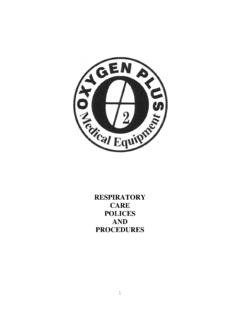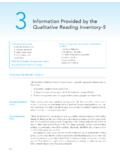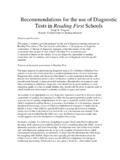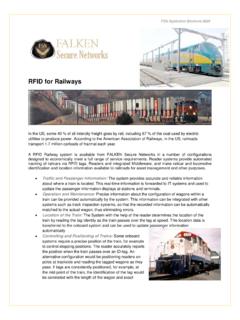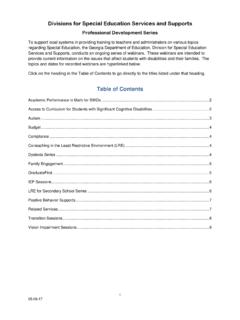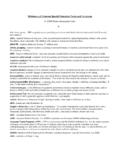Transcription of OXYGEN Policies and Procedures
1 OXYGEN Policies AND Procedures i Table of Contents Concentrator Guidelines 1-3 OXYGEN Concentrator Procedure 4-5 OXYGEN Conserving Device Procedure 6-9 OXYGEN Cylinder inventory 10 OXYGEN Definitions 11-12 OXYGEN : Equipment Standards 13-14 OXYGEN : Labeling 15-17 OXYGEN : Product Rejection 18 OXYGEN : Tank Procedure 19-21 Liquid OXYGEN Procedure 22-24 Review of OXYGEN Policies and Procedures 25 Quality Control Unit (QCU) 26 Responsible Persons List 27 Education: OXYGEN Services/ Support Staff Members 28-29 Filling Lox Units from PG 45 Lox Unit 30-31 Filling Lox Units from MDX 119 Lox Unit 32-33 Record Keeping: Compressed Medical Gases 34 Record Keeping: Cryogenic Home Vessels 35-37 Record Keeping: Lot Numbers 38-39 Record Keeping: Manifests 40 Record Keeping: Retention 41 Storage and Handling: Compressed Gases 42-43 Testing: After Repair 44-45 Verification of Supplier s Analysis 46 Prescription Tracking and Rotation 47 Calibration: Diagnosis Equipment 48 Certificate of Analysis 49 1 CONCENTRATOR CHECK GUIDELINES APPROVED BY: Board of Directors DATE EFFECTIVE: 3/30/05 DATE(S) REVISED: 2/03/2007 2/09/2013 Joint Commission Standard: Step 1: Unit must be running at least 20 minutes prior to conducting the check Step 2: Check all filters (cabinet and internal) Step 3.
2 Remove humidifier bottle and place tree connector on concentrator Step 4: Purity Check a) The purity check should run between 90% to 94%. (May vary between concentrator models). b) If the concentrator is below 92% replace the unit and bring to the office for Repair. c) After the unit filters have been changed and you have documented the unit serial number and hours of operation, log this information on the concentrator check form. (Serial #'s are located on the back of the concentrator on most models). d) Connect the handheld 02 analyzer to the concentrator via the tree connector at the patient supply port or DSS. (Analyzers should be calibrated every day before the tech leaves the office. This must be logged in the calibration log).
3 E) Allow the 02 analyzer to remain on the concentrator for 30 sec. to 1 minute. Allow the reading to balance out. If the reading is between 90% to this is acceptable. (If the purity of the concentrator does not meet this standard then remove and replace concentrator.). Step 5: Checking liter flow a) Take a 0-8 LPM liter pin and a 4-7 ft 02 tubing from tech bag. 2005 Affordable Health Care Consultants 2 b) Connect the tubing to patient supply port or DSS.
4 Check the position of the liter flow indicator on the machine and compare it to the liter pin. The liter flow should match. If the unit liter flow does not match the concentrator bring to the office for repair. Step 6: Checking the Patient Alarm a) With the liter pin hooked to the patient supply port and the 02 tubing, plug the end of the flow pin with the tip of your finger. You will notice the liter flow indicator on the concentrator drop to zero. b) The concentrator will sound an alarm n 1-2 minutes. This is telling you the concentrator is not putting out any 02 and purity is low. c) After the unit alarm has sounded remove your finger and the concentrator will return to normal within a few seconds.
5 D) If the concentrator fails this test you should remove and replace concentrator. (Some models have an alarm and a yellow caution light). Step 7: Checking Power Interruption a) With the concentrator in the ON mode, verify that power light in the front of the concentrator is green. b) Place the concentrator in the OFF mode. Locate the power cord and unplug from wall outlet. c) Place the concentrator in the ON mode. The concentrator should alarm with a steady ring. The tech should ask the patient if they can hear the alarm. d) If the concentrator fails to alarm or the patient can not hear the alarm you may need to replace the 9V battery. e) Make sure the unit is clean and has no defects in the cabinet or power cord.
6 2005 Affordable Health Care Consultants 3 STEPS 1-7 MUST BE DONE ON ALL CONCENTRATORS THAT ARE PICKED UP AND RETURNED TO THE OFFICE. THIS MUST BE DOCUMENTED BEFORE CONCENTRATOR GOES BACK OUT TO A PATIENT. Step 8: Final Procedure to be done in Patient's Home a. Remove all trash and debris from patient's home that you may have carried in. b. Replace all tubing, cannulas and humidifier bottles. c. Return the concentrator to normal operating mode. d. Because the unit has been in the test or check mode always double check the liter flow of the patient concentrator and ask the patient if there have been any changes to the current order for 02.
7 E. Have patient sign the concentrator check form and ask if they have concerns or questions. f. Make sure you (tech) sign the form. Forms without signatures are not acceptable. Special note: All concentrator checks are done on 5 LPM and the tech should make note of the current 02 setting before starting the concentrator check. Return 02 setting to current setting (If liter flow is not known contact office for the current Doctor's order) 2005 Affordable Health Care Consultants 4 OXYGEN CONCENTRATOR PROCEDURE APPROVED BY: Board of Directors DATE EFFECTIVE: 3/30/05 DATE(S) REVISED: 2/03/2007 2/09/2013 Joint Commission Standard.
8 An OXYGEN concentrator is an electrically operated device that compresses room air and directs the gas to a molecular sieve bed where the sieve material holds the nitrogen molecule and allows other gases to pass. The resulting mixture contains 87% to 95% OXYGEN , depending on the liter flow to the client/patient and the brand of equipment. Admission Criteria 1) Determination by a physician of the need for supplemental OXYGEN . 2) Insurance criteria for payment has been met, unless client/patient is private pay. 3) Residence adaptable for placement and use of an OXYGEN concentrator. 4) Client/patient or caregiver(s) trainable in the basic use, maintenance, cleaning, and troubleshooting of the device.
9 Physician Responsibilities 1) Provide diagnosis of the physiologic need for supplemental OXYGEN . 2) Inform the client/patient or caregiver(s) of the necessity for such a device in the home. 3) Provide a written, signed physician's prescription and any other necessary documents. Company Responsibilities 1) Equipment delivery and set-up per policy, unless otherwise specified. 2005 Affordable Health Care Consultants 5 2) Equipment delivered will be clean, properly maintained, and safely operating within manufacturer's specifications. Accessories will be provided as per physician's prescription. 3) Provide written documentation of the delivery, set-up, and proper function of the device to referral source.
10 4) Provide written documentation that the client/patient or caregiver(s) has been instructed about basic safety Procedures associated with the device. The client/patient or caregiver(s) will sign the Equipment Management Admission Assessment and Plan of Service, indicating that they have been instructed and understand the proper use, maintenance, cleaning, and troubleshooting of the equipment, and also basic home safety and the Plan of Care. Client/Patient Responsibilities 1. Client/patient or caregiver(s) must demonstrate the use, maintenance, cleaning, and troubleshooting of the equipment, and also basic safety Procedures associated with the device. 2. Client/patient or caregiver(s) must sign all necessary OXYGEN Plus, Inc.
